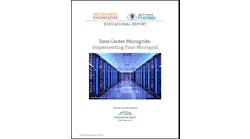The Alliance to Save Energy’s Rodney Sobin describes advances in energy efficient buildings that have resulted from work done by the DOE’s Building Technologies Office.
Accounting for about 40 percent of American energy use and about $400 billion in annual energy costs, buildings are fertile grounds for money-saving and pollution-preventing energy efficiency improvements. U.S. buildings offer hundreds of billions of dollars of investment opportunity that can yield as much as a trillion dollars in energy savings in the next decade.[1]
Considering this wealth of opportunity, greater finance for building energy efficiency is needed. Research and development — information, technical assistance and other facilitation — and supporting codes and standards are critical for overcoming impediments to improving buildings. Fortunately, the Department of Energy’s Building Technologies Office (BTO) is advancing the state of building science and accelerating the application of high performance and highly efficient building systems through an impressive portfolio of work.
One example is the Better Buildings Neighborhood Program. DOE partnered with over 40 states and localities to upgrade 105,000 residential and commercial buildings, supporting local jobs and strengthening skills. The program will save $730 million on utilities. The average participating household is expected to save $6,100 over the life of the upgrades and reduce utility bills by 22 percent. Home Performance with ENERGY STAR, which upgraded 350,000 homes in recent years, is another example; yielding 20-25 percent energy savings and improved home comfort.
BTO’s technical assistance is also proving effective. The Lighting Energy Efficiency in Parking (LEEP) Campaign provides specification and application guidance and other support to improve lighting efficiency for parking. Almost a half-billion square feet of parking structures and lots are saving over $10 million and 120 million kWh annually. New lighting technologies are achieving 70 percent savings on energy and 90 percent on maintenance. BTO has also been developing commercial building energy data tools and a Home Energy Score to improve building energy management and enhance energy information transparency in the real estate market.
Meanwhile, eight DOE appliance standards finalized in 2014 will provide $50 billion in cumulative consumer savings through 2030 while preventing 272 million metric tons of carbon dioxide emissions.[2] BTO also plays a supportive role in advancing building energy codes, which are offering increased cost-effective savings to home and commercial building owners.
Emerging technologies are propelling efficiency gains. It is not only highly visible LEDs that are making an impact. Many technologies are emerging from the lab to make a mark, from “transcritical CO2” refrigeration systems that can reduce supermarket refrigeration energy use by a quarter, to new spray-on sealants to tighten building shells to modeling and simulation software to help product and building designers.
With the Pacific Northwest National Laboratory, BTO has begun a Buildings of the Future scoping study to develop a vision for future buildings a century from now. It will investigate technology trends that will revolutionize the built environment across energy, water, environment, resilience, health, productivity and security.
A glimpse of BTO’s work leaves me excited and optimistic for the future of the American buildings sector.
Rodney Sobin is director of research & regulatory affairs for the Alliance to Save Energy. This article originated on ASE’s blog.






